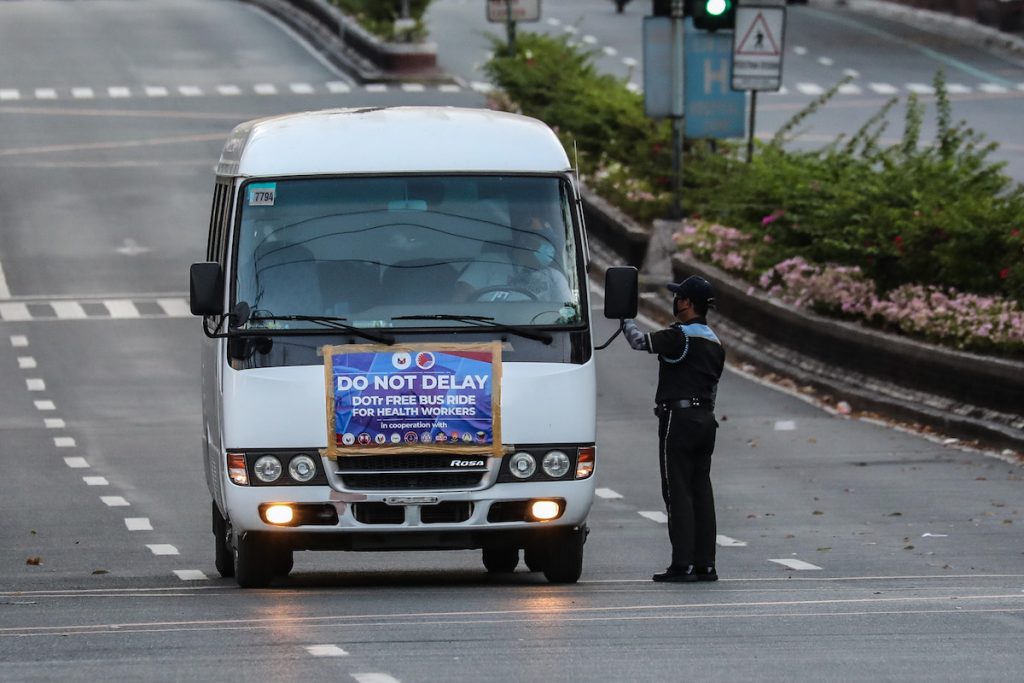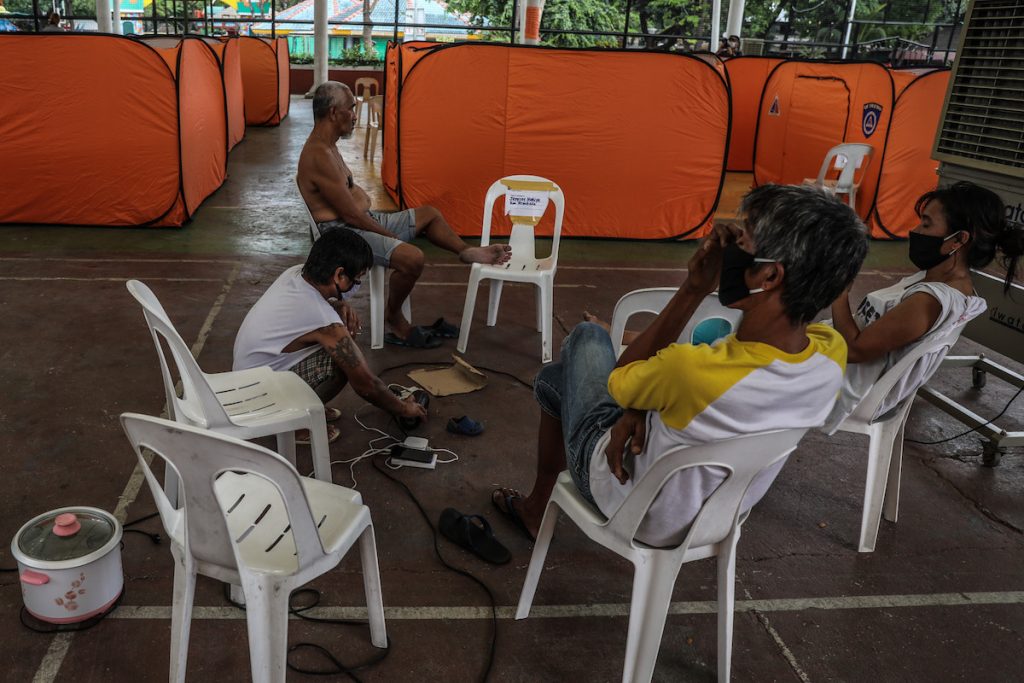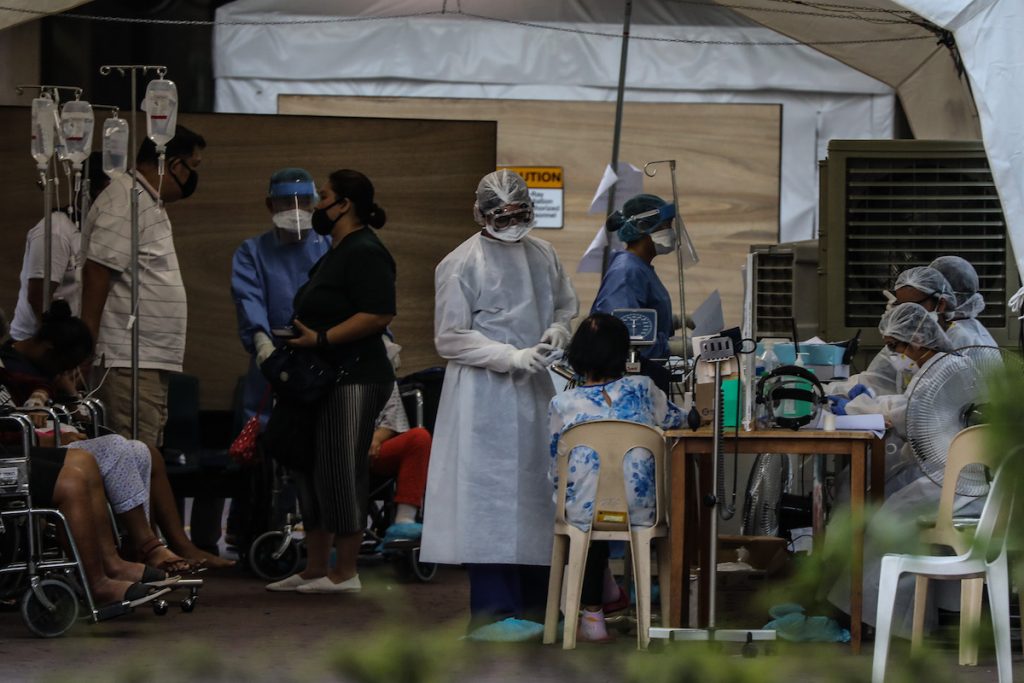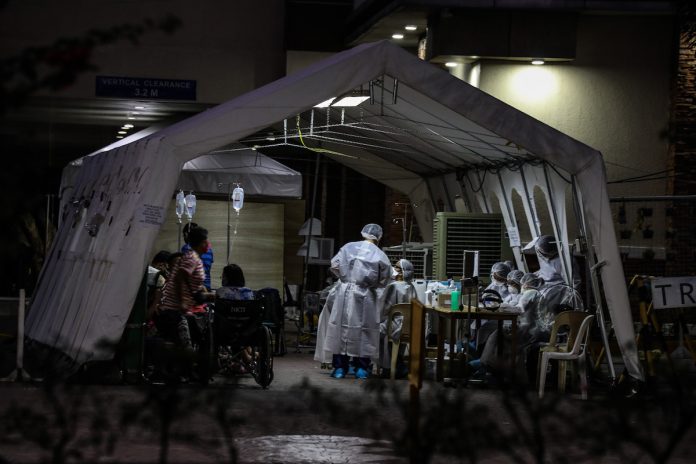The Philippines has rushed preparations for the use of sports stadiums and schools as quarantine centers as rising numbers of novel coronavirus infections have created tinderbox conditions in urban communities.
The health department said the move is part of containment measures against the virus, which has so far infected more than 1,500 persons and killed 78 patients as of March 30.
The government centers that will be turned into quarantine areas will start taking in about 2,900 patients and possible carriers next week.
Authorities said priority will be given to residents of slums where cramped living conditions make “isolation” an alien concept.
Health experts had warned that the virus could infect as many as 75,000 people in the country by mid-April if drastic curtailment of movement is not implemented.
President Rodrigo Duterte has imposed a lockdown on the whole island of Luzon, including the capital Manila, on March 16.
The first two weeks of the lockdown were tumultuous, highlighted by hasty issuances of orders followed by recalls, and ground enforcers overstepping guidelines.
By March 30, however, the national government showed signs of cleaning up its act.
Crew and technicians swarmed across sports arenas to retrofit these to separately house patients with milder symptoms and potential carriers awaiting tests or test results.
Teams of health workers and soldiers have started delivering critical medical equipment and supplies to more than 70 provinces.
Health officials also narrowed a diagnostics nightmare that had patients dying without undergoing tests.

Local initiatives
But the central government’s effort trails behind initiatives by young mayors who have scrambled for weeks to stem community transmission and shore up a health system in crisis.
Local measures contrasted with the central government policy of sending all but the most serious potential and confirmed cases to home quarantine, with little oversight.
The rash of severe COVID-19 cases in just two weeks sent thousands of medical staff into quarantine and affected care for patients with other serious ailments.
Medical directors warned that depleted supplies of protective gear worsened the odds of hospital-acquired infection.
The capital’s biggest private hospitals have stopped admitting new cases, citing staffing problems and concern for other patients.
But by March 30, every province had set up dedicated COVID-19 wards in bigger government hospitals.
The government also called out for volunteer doctors and nurses but earned public scorn for offering rates even lower than the legal minimum wage.
More than 600 signed up as health officials promised more competitive salaries.
Germany and the United States are attracting Filipino medical professionals, however, with income offers three times the local levels and swift approval of visas.
The combination of hospital horror stories, government warnings about the ease of infections, and the lack of testing provide a toxic mix that have turned health workers into targets of attacks.
Growing danger
The fast-growing infection numbers actually reflect the government’s improved testing capacity but created a backlash against health workers and suspected carriers of the virus.
Residents of Manila’s Tondo district, host to many urban poor villages, barricaded alleys to prevent the return of neighbors who are known to have sought medical advice.
A gang threw bleach on a medical worker’s face as he walked to work in the southern Philippine city of Tacurong,
Village officials set up barricades outside the gates of a hospital in Mariveles, Bataan province in Luzon, blocking staff exit after the death of a patient with COVID-19 symptoms.
Elsewhere, doctors and nurses were being kicked out of rental homes and refused rides.
“In a public health crisis/emergency where time is of the essence, red tape and inefficiencies will cost precious lives,” warned Francis Escudero, governor of the southern province of Sorsogon.
Mayors also pointed out that dwindling funds for basic food needs could make it harder to keep people at home and increase frustration levels.
Early intervention by Vice President Maria Leonor Gerona Robredo, churches and private organizations now allow health workers in the capital to access a dozen shelters.
Catholic and Christian schools in the provinces also opened temporary dormitories and local governments have hired buses to ferry personnel from homes to hospitals.

Defusing social tensions
Officials hope the new quarantine facilities and dormitories, and expanded testing capacity, could help defuse social tensions.
Authorities have succeeded in tripling testing capacity, from just 300 tests to 1,000 tests daily, with the arrival of hundreds of thousands of new screening kits from China, Singapore and other countries.
Turnaround time for tests, which reached as long as eight or ten days last week, is now down to 48 to 72 hours, the health department said.
After weeks of prodding by medical and business sectors, and one of the world’s most active social media community, the government also approved the use of five rapid COVID-19 test kits.
For weeks, it insisted on sticking to slower “gold standard” of the SARS-CoV-2 PCR Detection Kit, which only special laboratories can process.
The Department of Science and Technology expects approval this week for local test kits developed by scientists from the University of the Philippines National Institute of Health and the Philippine Genome Center, with a target rollout of 120,000 kits.
Five new government testing centers opened in the three main island groups of Luzon, Visayas and Mindanao to meet demand.
The health department is also checking 30 other public and private hospitals that want to offer testing services.
The new developments will ease the burdens of the Research Institute for Tropical Medicine, which has so far tested a little more than 3,000 samples.
The University of the Philippines-Philippine General Hospital launched its operations center for COVID-19 concerns, providing separate hotlines for patients, donors, volunteers, and donors.
Catching up
Duterte’s lockdown has been largely heavy on tough enforcement measures while lagging in health and social welfare concerns.
In the first two weeks, the private sector filled the vacuum with hundreds of millions of dollars of donations in kind and in cash.
Citizens organized carpools and mobile kitchens. They opened shuttered establishments for the homeless only to find law enforcers at their doors.
The finance department said government corporations have already turned over US$196 million for the national COVID-19 response.
It said the government can tap US$3.9 billion in public funds under a new law granting Duterte extraordinary powers to handle the public health emergency.
Critics, however, accused the government of demanding quick action from local governments while keeping a tight lid on resources needed to battle the contagion.
Duterte earlier warned local government executives to obey his draconian quarantine orders but offered no specifics on how to help them meet the needs of residents.
Interior Secretary Eduardo Año met the mayors’ outcry by telling them to realign infrastructure funds, a move that normally leads to graft charges.
The challenges did not stop Metro Manila’s mayors from opening shelters and cleaning facilities for thousands of homeless folk. They also organized mobile markets to limit the movement of people.

Getting its act together
Slowly, the central government is also getting its act together.
After weeks of angry protests by medical workers, the health department started distribution of more than a hundred thousand protective gear like masks, gowns, shoe covers, head covers, goggles, and face shields.
Soldiers also began moving new shipments of half a million disposable masks.
Senior citizens, trapped in their homes by overzealous curfews, finally stepped out for errands on March 30 after the trade department ordered the return of priority lanes.
The Department of Agriculture launched a US$39 million program to purchase crops directly from producers after a transport crisis forced farmers to dump products.
It will bring produce to towns and cities to stabilize supplies while regulating prices. The department also earmarked US$137 million for rice imports and US$58 million in cash aid to farmers.
The labor and social welfare agencies have started validating lists of social amelioration recipients, including 18 million poor Filipinos in a country of 110 million people.
But labor alliance Defend Jobs said more than 3,557 companies had not started the process of accessing the government’s 5,000-peso emergency cash assistance for workers. The labor group said it received almost 16,500 online complaints about unpaid benefits.
The threat of unrest sent companies flooding the labor department’s online processing system with applications, paralyzing it for a few hours on March 30.









